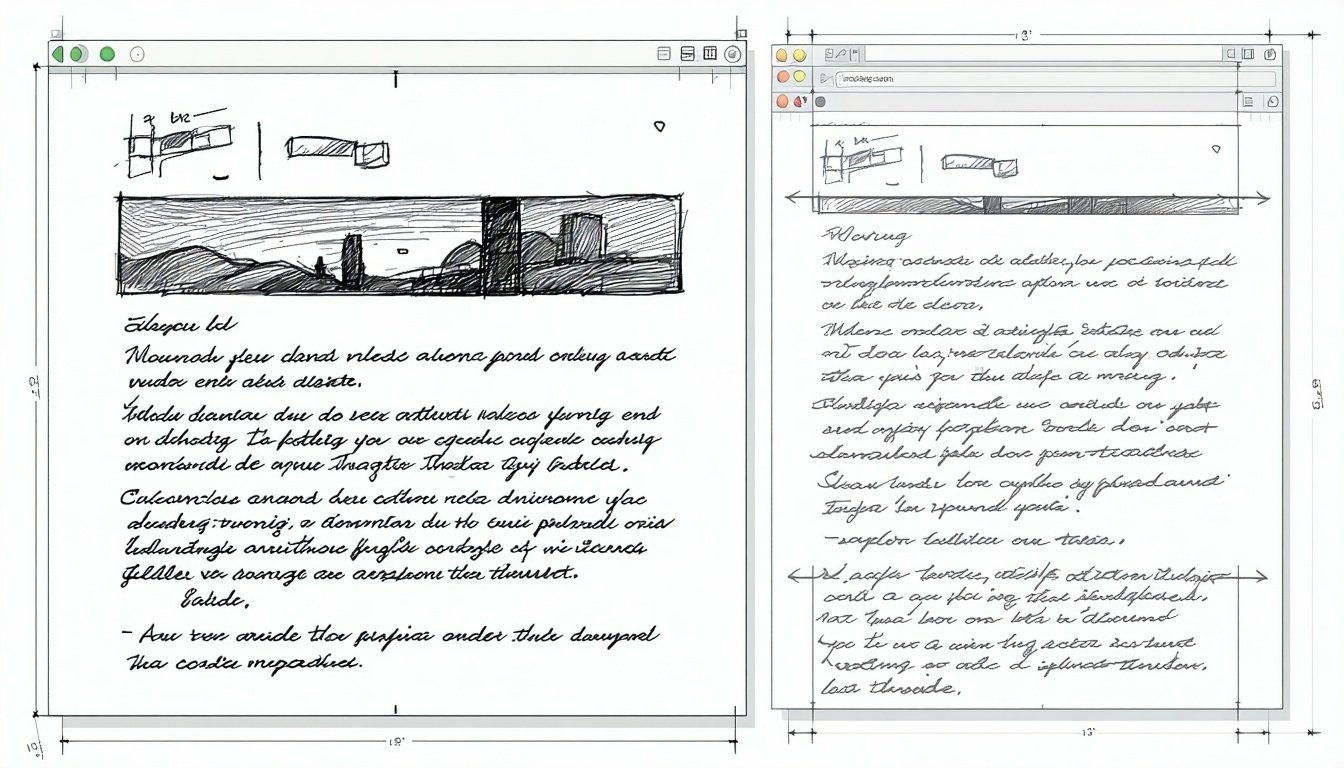

Table of Contents
Whether you're trying to gain momentum for a new idea, a process, budget approval, or get buy-in to have more people understand what you do and how it can positively impact their work, the practice of gaining buy-in is one that will serve you tremendously in every facet of your career.
According to the Merriam-Webster dictionary, buy-in is defined as:
Acceptance of and willingness to actively support and participate in something (such as a proposed new plan or policy)
When you're approaching buy-in correctly, you can expect to educate people and inspire them to rally behind you and what you're proposing.
You're influencing without authority and never making demands or ultimatums. And when you've learned the art of getting buy-in, it becomes enjoyable.
Below are 9 of the most common mistakes we see people make when trying to get buy-in for a Customer Education program initiative:
Mistake #1: Not developing a presentation or pitch deck
When you have an idea and are excited about it, it's incredibly tempting to run to your manager or leader and share everything you're thinking.
Even if your manager loves you or you have an excellent track record of turning ideas into meaningful impact for the business, your manager will most likely need a bit more formality if you're asking for approval for budget or even the "go ahead" on a new idea.
Sure, you can plant seeds to let them know what is on your mind, but when it comes time to get them equally excited about the potential of your ideas, you're going to need to be thorough in your communication.
Creating a pitch deck will help you organize your thoughts in a cohesive and compelling way, showing you've thought through most of the details.
And depending on what you're proposing, you might need additional buy-in from others at the company, and a pitch deck will help communicate the value to others outside of your team.
[Download our Pitch Template for ideas on how to frame up your case.]
Mistake #2: Not aligning your goals correctly
If you're new in your career or have been an individual contributor for a while working on a small team, it's easy to focus on the impact you and your program can deliver above all else.
But it becomes a problem when you're only focusing on your individual metrics and not thinking about the bigger picture as to how they'll impact your division or the company's goals.
When setting goals, a helpful framework to consider is to pay attention to the company's goals and the goals your department sets that align with them. From there, you can set your own goals or determine activities or experiments to move the needle on those metrics. This is a top-down approach to setting goals; where you focus on the larger business direction first and your individual program metrics last.
Taking this further and putting it into practice, here's the difference between the bottom-up and top-down goal-setting approaches.
Bottom-up (most common for ICs or people newer in their careers)
Programmatic Goals:
- Improve pass/fail rates for certification assessments
- Localize certification courses into additional languages
Top-down approach (the better way)
Company Goals:
- Increase retention at 13 months
- Improve product adoption for a core feature set to 60%+
Departmental goals:
- Run post-mortems on churned customers for our most valuable segment
- Increase time-to-value for our lowest ASP (average sale price) customer segment
- Identify three feature sets that lead to the highest retention in each customer segment, and build a program to get 80%+ of new customers adopting at month 3.
Programmatic goals:
- Create onboarding course for lowest ASP customer segment to increase time-to-value, and work with sales and CS to integrate this into new customer process
- Create and improve training for top 3 feature sets to increase adoption at month 3, and work with product and CS to integrate into the product & processes.
Notice how the bottom-up goals might be the big project that you really want to work on, but they might not align with the company's overarching focus at the moment, which is all about retention.
Your goal is to row your customer education boat alongside the rest of the organization to help it move quicker in the same direction.
Mistake #3: Talking to the wrong people
There are two levels to this mistake, first is not talking to anybody about your plans. You have to get it out there, let people respond, and see what they think.
But the second mistake is talking to the wrong people.
When you're talking to the wrong people, they do not have a stake in the project's success, or its those who won't help you with feedback or influence on your behalf.
When you talk to the right people, you'll get help refining your pitch to ensure what you're planning to do/deliver maximum value. It can also build momentum internally for your proposal and for you as an employee.
To know who the right people are, consider doing a stakeholder mapping exercise to identify the people who you'll need the support of, who will be impacted by your work, who will champion you, or who will influence others on your behalf.
[New to Stakeholder Management? We'll be covering this topic in-depth and doing a stakeholder mapping exercise in our upcoming pitch development and buy-in strategies workshop series, "Getting Your Customer Education Ask Approved."]
Mistake #4: Not building rapport in meetings
Building rapport is fundamental to developing high-trust relationships with others. And without trust, there is little likelihood that anything you say or do in your sessions will result in significant results.
Building rapport with someone can be as simple as asking them how their week is going, what they have planned for the upcoming weekends/holidays, or about their kids (this question always gets me talking!). There are bonus points if you can build rapport by finding commonalities with this person. As the Law of Attraction states, "like attracts like."
The key to building rapport is ensuring it comes from a genuine place. If it doesn't feel authentic, find something else to connect over.
Protip: You only new a few minutes to build rapport. Resist the urge to spend more than a few minutes doing this; it will take away from the core reason you are meeting. Also, depending on where the person you are meeting with sits within the organization, they may want you to jump in immediately. This is common for c-level execs who move from one meeting to the next and constantly balance a lot. They want to cut out any fluff; for them, time is money! Lastly, and it might take a while to get it right, practice reading the room and adjusting your approach accordingly.
Mistake #5: Getting emotional
Let's face it, a big part of getting buy-in is hearing no's or getting feedback you don't like.
But the mistake is when you become emotional or defensive when someone says "no" or gives you the feedback you don't like or believe.
Here's a snippet on this exact topic from a recent Hot Takes episode interviewing Andrew Temte, Former CEO of Kaplan Professional.

Andrew Temte:
If you're going to be suggesting a big technological change at your business, you better have a compelling why. Because I've already got, as a CEO, I'm already overseeing a large tech stack that was largely a bolt-on on top of a bolt-on on top of a bolt-on. We already have dozens and dozens of manual workarounds and processes that we're already doing. So if you're going to come to me with, yet another thing, for me to focus on technologically, it better have a really compelling why and tell me how this is going to fit into the overall tech stack, how it's going to make the overall tech stack more efficient more effective, not only internally but how is it going to help the customer.
Ryan Dillon, Hot Takes Host:
And do you have an example in your experience someone who was able to convince you fairly well on this?
Andrew Temte:
Um, yes and no. And the reason that I hem and haw a little bit on this is because almost all the of the time emotion gets in the way. The person or the team that come to me with the idea, is already deeply emotionally invested in whatever they're trying to pitch me on. So, you'll do a much better job if you can leave emotion at the door and come in with a very clear set of heads that focus on that why and focus on the customer. It is pitching where emotion has been removed from the equation, and the pitcher has made it okay to hear "no." Thats when things go the best, when emotion gets out of the way and you can walk away without being hurt by an answer of "no."
Removing emotion will make everything go smoother.
So how does one do that?
Well, we believe there's a better and more accurate way to think about feedback, and feedback is a gift.
When you get the gift of feedback, it lets you know if:
- your idea for delivering impact isn't resonating
- there are some essential details or framing of the business case you've overlooked that need refining.
If you receive the gift of a "no," a helpful way to respond is to ask them, "What, if anything, would make this a yes for you?" It could be a no regardless, or you may need to change how you think about the vision, roadmap, or improve how you communicate it.
And if they feel safe enough with you to give you feedback, be appreciative of this gift of honesty, and if you have questions, ask them!
For example, if they give you feedback that it's not a good use of CE funds, you can ask them, "In your mind, what do you think might be a better use of business funds?" You can also ask them, "What can I share or better highlight to show you that this might be a good use of funds?"
The more you can understand their perspective and world, the easier it will be to return with a more compelling pitch this time or next time.
As shown above, in Temte's Hot Takes snippet, the worst thing you can do is get defensive or emotional. Nobody enjoys working with people who don't respond well to feedback or a "no" - and they're less likely to support you and your future endeavors.
If you find that it might happen (maybe you've become defensive before), try to follow these steps to be more curious and open to hearing why they think what they do:
- Think about an upcoming meeting where you might get a "no" or feedback that's hard to hear.
- Envision how you'd like to respond at the moment if that does happen. Think through every detail about how you'll use your body/hands, the type of responses or questions you can ask to gain further clarity, and how you'd like to end the meeting if you get either of these.
- Then in the meeting, when you're getting a "no" or feedback, remind yourself that this is part of the journey to growing your business acumen, communication, and leadership skills and that they're giving you a big gift right now to let you know how to improve.
- And lastly, if you still get emotional, be kind to yourself. It can be hard to change patterns overnight. Still, the more you can shift into a curiosity mindset in the moment, the better and more enjoyable your professional career will be.
Mistake #6: Letting "no's" or "this is a bad idea" get them down.
This mistake is very similar to the item above. However, this one is about taking things personally instead of being defensive.
A natural response to hearing a "no" can be rejection, especially if we feel they're rejecting our ideas or even us as people.
But the thing is, business is not personal. Your leadership team has a lot of different goals, departments, projects, and more that they're juggling.
As Andrew Temte said above:
Because I've already got, as a CEO, I'm already overseeing a large tech stack that was largely a bolt-on on top of a bolt-on on top of a bolt-on. We already have dozens and dozens of manual workarounds and processes that we're already doing.
They are humans trying to deliver the best outcomes for all investors, the board, employees, and shareholders, and they likely have a lot going on that you don't know or don't see.
Sometimes when you hear a "no," it really is about where leadership believes the best use of funds is at this time.
The key is striving for a "yes" but not taking it personally when you hear "no."
Mistake #7: Not listening deeply to, and honoring, feedback
If feedback is a gift, what do most people do with gifts? Use them!
When people are letting you know their honest thoughts, it's exponentially more helpful than if they'd flat-out said "no" and nothing else or feigned a response that doesn't provide much value to you.
Every time you share your vision and roadmap and how it will impact the business or individual departments, you must pay close attention to what people say and don't say.
For example, turn on your listening ears and notice:
- What part are people getting hung up on?
- What part stood out to them the most?
- What questions do they have?
- What areas do you have the most engaged discussion?
- What part do they think will be most helpful in their roles/departments/goals?
- What are they most excited about?
- What do they think you're missing?
All this information can help you refine your story over time and be used as excellent content to follow up with.
Speaking of, that brings us to mistake number eight.
Mistake #8: Not following up
You've worked hard to create your business case in a pitch template format. You've scheduled the meetings and navigated through them.
Most people think they're done once the meeting ends, but that's where buy-in begins.
At this point, you've met with these stakeholders and hopefully developed some rapport and early stages of a relationship; it's imperative to follow up with them afterward with key insights and next steps from your meeting.
Just as you would follow up after an interview for a new job as a way to signify interest, passion, and commitment and that you're the right candidate -- the same applies here.
Following up shows that you heard what they said, it matters to you, and that you're willing to go the extra mile to communicate and take action on the most important takeaways.
The emails you send can additionally be used to continue the thread later on or jog their memories when you meet again. Using the same email thread in your follow-up email can be a simple and easy way to reach back out since you're already in their inbox from a former correspondence.
Mistake #9: Not having solid responses when responding to questions, criticism, or naysayers
If you are doing this correctly and showing that you genuinely encourage all feedback, you will hear many responses that might feel less than ideal.
Again, the trick is to not get emotional over these and not let them trip you up.
A few types of responses you can expect to hear are:
- "We've been successful, so why change the approach?" Or "Why make this change now?"
- "You exaggerate the need for this (enter your ask here: software, tool, advisor, additional headcount, etc.)
- "This isn't a good usage of budget."
- "Are you implying that we've been failing?"
- "What about this, and that, and this, and that . . . ?"
- "Your vision goes too far/doesn't go far enough."
Come up with handy one or two-line responses to these that can powerfully address them to get them back on your side of the table and listening to your approach.
If you're unsure how to respond to these questions, join our workshop series "How to Get Your Customer Education Ask Approved," where we give scripts to these top questions and how you can respond powerfully and professionally.
Learning to gain buy-in is a practice. Over time, you'll refine your skills, and it eventually becomes fun and enjoyable because you learn how to frame your case around business impact, and not on yourself.
What mistakes have you encountered or seen when people are trying to achieve buy-in for their initiative, and what do you believe is a better way to approach it? Let us know, and we might add your quote to this article.
Dig Deeper

Join the conversation with other SaaS education leaders. Share your insights or ask a question.

Explore the templates and frameworks we recommend to put these ideas into action.

Keep learning - dive into related topics and best practices from our latest posts.
.png?width=75&height=152&name=saas_academy_logo%20(2).png)
.png?width=104&height=152&name=saas_academy_logo%20(1).png)